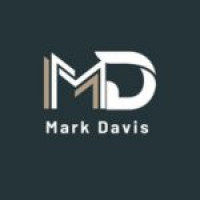8 Pillars of Total Productive Maintenance (TPM): A Beginner’s Guide

Before we look at the eight pillars of TPM, let’s start with the concept of TPM itself. What does Total Productive Maintenance (TPM) mean? (TPM) was developed by Seiichi Nakajima in Japan between 1950 and 1970.
Initially, TPM referred to asset management that included overseeing the maintenance and performance of machinery and equipment. The goal was to bring out the maximum output from machinery or equipment, increasing productivity and reducing operational costs. Later it combined with Lean and became a lean maintenance strategy that aimed for minimising downtime, errors/ defects and work related accidents.
In short, TPM aims to have
- No Breakdowns
- No Small Breaks or Slow Running
- No Defects
- No Work related accident
To achieve zero errors and defects and improve the overall equipment effectiveness, it’s essential to have a strong foundation on which these objectives are achieved. These foundation or action plans that support equipment efficiency are called the 8 pillars of TPM.
The 8 Pillars of Total Productive Maintenance
For improvement of equipment effectiveness, efficiency and achieving a holistic improvement at every level, the 8 pillars/ steps of TPM offered a roadmap. These 8 pillars are:
- Focused Improvements (Kobetsu Kaizen)
- Autonomous Maintenance (Jishu Hozen)
- Quality Maintenance
- Planned Maintenance
- Early Equipment Maintenance (EEM)
- Education & Training
- Office & Administration TPM
- Safety, Health & Environment
1. Focused Improvements (Kobetsu Kaizen)
The first pillar of TPM is Focused Improvements and it only suggests one thing: to improve and improve continuously. The goal is clear to reduce and avoid the loss of talent, equipment and resources by devising a strategic plan or vision. To achieve this, Kaizen events are conducted in companies where teams with members of different departments join forces to come up with solutions to common challenges that hamper growth.
2. Autonomous Maintenance (Jishu Hozen)
Autonomous Maintenance (Jishu Hozen) is the second pillar of TPM. In a production environment, it is crucial for workers to have some level of autonomy based on which they can take decisions without waiting for approvals from the top management. To avoid losses, downtime and equipment failure, it is crucial to hand over the ownership of the equipment to the operator or workers. The workers are encouraged to pay attention, look for defects and suggest improvement before equipment downtime occurs.
3. Quality Maintenance
Any production or manufacturing business aims to deliver quality finished products to its end customers. In order to achieve this, the third pillar of TPM, quality maintenance offers support. In this process, stringent internal quality checks are put in place to ensure quality control. Quality maintenance is also necessary so that businesses can ensure that their customers receive high quality products with zero defects.
4. Planned Maintenance
The fourth pillar of TPM is planned maintenance. It ensures scheduled maintenance tasks are conducted depending on previous predicted or measured failure rates. Planned maintenance can be both reactive maintenance and preventive maintenance. The benefits of planned maintenance is that it reduces the rate of unplanned equipment failure. Planned maintenance can also be done after non-working hours, ensuring machinery stays in an optimal condition.
5. Early Equipment Maintenance (EEM)
Early Equipment Maintenance is one of the most effective pillars of TPM. The practical knowledge and understanding of working with old manufacturing equipment can be used in choosing new manufacturing equipment or developing cutting-edge equipment. This pillar also enables workers to incorporate machinery into the existing equipment systems in a smooth and streamlined manner. The future maintenance of the new equipment also becomes much simpler due to hands-on experience and worker’s involvement prior to installation.
6. Education & Training
Training and education are an integral part of TPM pillars. Otherwise, how will you entrust workers with the responsibility of conducting preventive equipment maintenance on their own? Investing in training and education is important to fill in the knowledge gaps and keep your personnel up-to-date in a world of ever changing technology. From top management to bottom level knowing basic equipment knowledge is paramount and so is the maintenance of such equipment. Routinely upgrading skills via TPM training will help workers identify equipment failure problems even before they emerge.
7. Safety, Health, & Environment
Any manufacturing business wants to achieve the goal of a zero-accident workplace and be super productive. Therefore, it is essential to create a healthy and safe workspace. A healthy and safe work environment encourages employees to perform to the best of their capabilities. This means little to no burnout and absolutely no work related accidents. This pillar encourages businesses to be more empathetic and prioritises their worker’s well being over anything else.
A safe factory environment can be established by using Standard Operating Procedures (SOPs), Personal Protective Equipment (PPE), and having first-aid kits all around for emergency use.
8. Office & Administration TPM
The last and final pillar of TPM is office and administration TPM. This means to successfully implement all principles of TPM in all areas of business. Managers, admin personnel and cross functional teams should also do their part. All work related to TPM cannot be the sole responsibility of operators or factory workers. Everyone is responsible for driving growth of a manufacturing business, whether it’s using a proactive approach in planning, or using a measured approach in scheduling or logistics.
These are the eight pillars of TPM that every beginner should know. If your manufacturing business is facing equipment failure and wastage of time, money and resources, TPM can be a game changer for your business. Leverage TPM consultancy and watch your manufacturing business grow.
Note: IndiBlogHub features both user-submitted and editorial content. We do not verify third-party contributions. Read our Disclaimer and Privacy Policyfor details.







